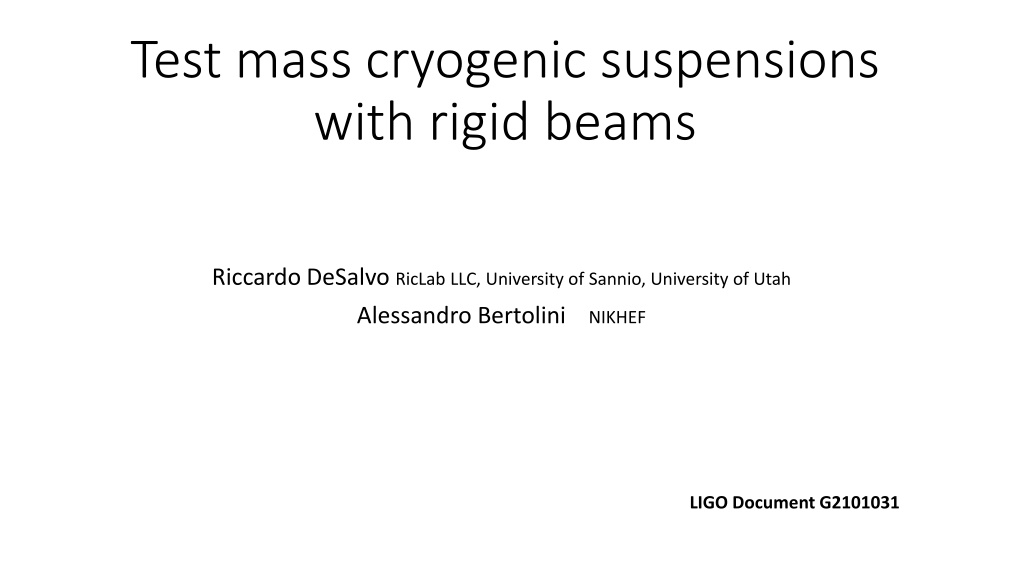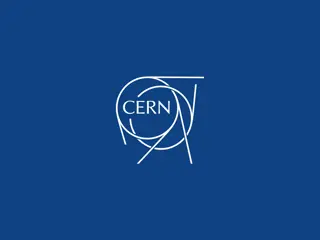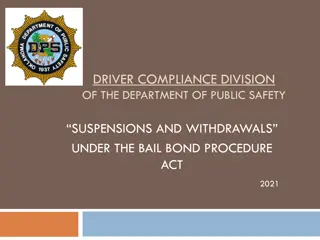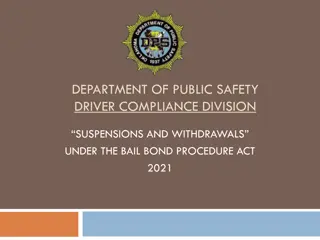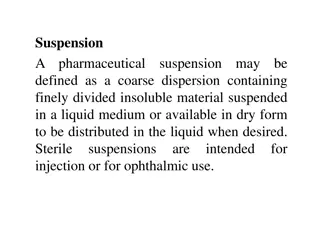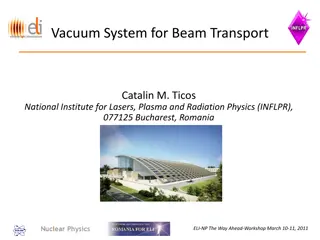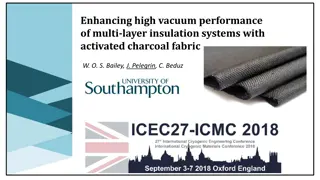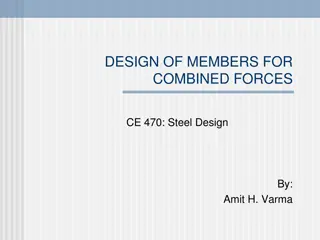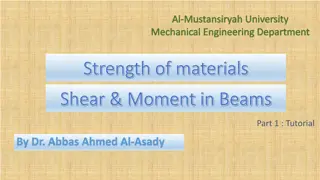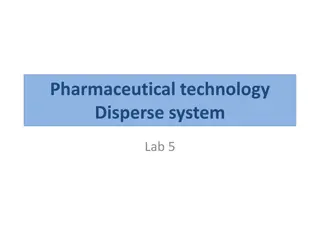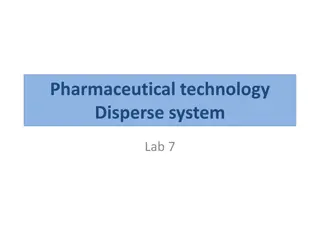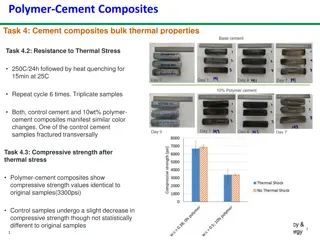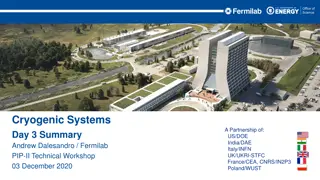Innovative Solutions for Cryogenic Suspensions Using Compressive Flexure Beams
Test mass cryogenic suspensions with rigid beams pose conflicting requirements, such as thermal noise reduction and vibration attenuation. This study explores the use of compressive flexure beams as a solution to achieve flexibility without sacrificing thermal conductance. Compressional mode flexures allow for accurate machining, stable assembly procedures, and effective load distribution, utilizing materials like Indium and Gallium for brazing without adding thermal noise. The implementation of compression flexure in beams involves carving a slot with a flat bottom at the end of the suspension beam and inserting flexures and a crossbar.
- Cryogenic suspensions
- Compressive flexure beams
- Thermal noise reduction
- Vibration attenuation
- Flexibility
Download Presentation

Please find below an Image/Link to download the presentation.
The content on the website is provided AS IS for your information and personal use only. It may not be sold, licensed, or shared on other websites without obtaining consent from the author. Download presentation by click this link. If you encounter any issues during the download, it is possible that the publisher has removed the file from their server.
E N D
Presentation Transcript
Test mass cryogenic suspensions with rigid beams Riccardo DeSalvo RicLab LLC, University of Sannio, University of Utah Alessandro Bertolini NIKHEF LIGO Document G2101031
Conflicting requirements Suspension thermal noise is critical at the lowest frequencies The suspensions must be long and thin, For vibration attenuation very flexible For thermal noise (minimize pendulum elastic energy) Fabricated with metal wires or fused silica fibers short and fat For thermal conductance to extract the heat deposited by the light beam in the mirror, made of fragile crystals for heat conduction (Sapphire or Silicon)
Using beams for cryogenic suspensions 15 Let s consider a square cross section rod. provide large thermal conductivity are too rigid to be useful Short flexures get flexibility with small loss of conductivity are extremely fragile, almost impossible to work with Tensioning confines the bending making it effectively stiffer 15
Compressive flexure Solution flexures working in compressional mode allow : To separately machining all components Cheaper and more accurate machining) Fully engineer the assembly procedure Compressional assembly is intrinsically stable Bonding and de-bonding with thin metal braze is possible Compressional load distributes the bending along the length making the flexure effectively softer
Compressive flexure Brazes Indium and Gallium are possible braze materials Braze does not add thermal noise because Effectively direct contact between crystalline components No elastic oscillation energy is stored in a thin film; Gallium is a better braze than Indium because It melts just above room temperature allowing easier assembly and disassembly It expands at the transition to solidus thus making better bonds It typically better wets crystals It has slightly higher Q factor
Implement compression flexure in the beams 1. Carve a slot with a flat bottom at the end of the fat suspension beam 2. Insert flexures and a cross bar to be attached to the mirror 3. Braze in compression Problem: beams are very massive, transmit vibration via batting center effect
How to realize good attenuation with massive beams Add percussion point compensation like Inverted pendula Taking advantage of the beam rigidity The percussion center compensation arm is implemented above the mirror or above, inside the marionette. Beam resonances are problematic Passive Eddy current damping, or active damping can be implemented inside the marionette
Example of Beams+flexures internal modes (to be checked with FEM) Si cylindrical flexures 2-mm diameter,11-mm long; beam 10-mm diameter, 989-mm long. yaw mode ~220 Hz tilt mode ~470 Hz Even the beam- flexure resonances are at sufficiently high frequency to be easily damped translational mode ~270 Hz
Use the compensation arm for controls of the test mass The compensation arms extending inside the marionette can be used as control levers Actuation for the test mass controls can be applied from above eliminating the need for a recoil mass Axial and Yaw actuation can be implemented Pitch actuation is tough, it requires : vertical compliance in the beam support points acting or act on marionette s pitch
How to attach the suspension beams to the mirror 2 Grind two vertical trenches and a horizontal slot on the sides of the test mass The front surface of the mirror is untouched The slot forms a shelf to anchor the suspensions in compression Insert the suspension beams and anchoring bars All assembly is in compression !!!
Silicon or Sapphire Suspensions? conductivity 4K TYPICAL VALUES OF THERMAL CONDUCTIVITY @~ 4K: sapphire 100W/m*K silicon 1000W/m*K recently measured @KEK on 1-mm IMPEX rods. Phonon peak in Si is shifted towards lower temperatures. Silicon is preferrable
Silicon or Sapphire Suspensions? flexibility cylindrical flexures 2.5mm diameter X 12.5mm length cylindrical flexures 2mm diameter X 10mm length Sapphire has high stiffness Stress is high and flexures get in tension (may crack) even for minimal swings. Dilution factor is poor. Flexures are never in tension and safer than with sapphire. Dilution factor is good Silicon is preferrable
Conclusions KAGRA s experience has shown that rods under tension are either too rigid or have too little thermal conductivity. Large diameter rigid rods coupled to the mirror and PUM by means of flexures in compression appear more promising. Fully compressional configuration allows safe use of much higher stress levels in thinner, softer flexures Assembly and disassembly are easy
